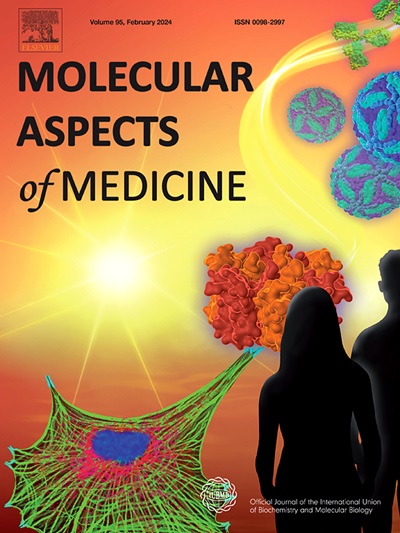缺血-再灌注损伤:精确治疗的路线图
IF 10.3
2区 医学
Q1 BIOCHEMISTRY & MOLECULAR BIOLOGY
引用次数: 0
摘要
缺血再灌注(I/R)损伤在医学领域普遍存在,严重限制了各种缺血性疾病的治疗效果,对患者预后产生不利影响。I/R损伤的发病机制非常复杂,涉及氧化应激、炎症反应、线粒体功能障碍和多种细胞死亡途径之间复杂的相互作用。一旦线粒体呼吸链受损,就会引发氧化应激反应,导致活性氧(ROS)的过量产生。过多的ROS不仅会直接损伤细胞,还会激活炎症反应,启动多种细胞死亡信号通路,如坏死、焦亡、铁亡等,从而加重组织损伤。此外,I/R损伤的临床表现在心、脑、肾、肝、肺等不同器官之间存在显著差异,并进一步受到患者基础疾病的影响,给临床诊断和治疗带来挑战。因此,构建基于患者个体特征(如遗传多态性、合并症等)的综合评估体系,准确预测I/R损伤风险就显得尤为重要。目前,预防和治疗I/R损伤的策略多种多样,但将基础研究转化为临床应用仍然具有挑战性。开发针对不同细胞类型的个性化治疗方案有望克服现有的治疗瓶颈,显著改善患者的预后,并为解决I/R损伤的挑战提供新的方向。本文章由计算机程序翻译,如有差异,请以英文原文为准。

Ischemia - Reperfusion injury: A roadmap to precision therapies
Ischemia-reperfusion (I/R) injury is prevalent in the medical field and significantly limits the therapeutic outcomes of various ischemic diseases, adversely affecting patient prognosis. The pathogenesis of I/R injury is highly complex, involving intricate interactions among oxidative stress, inflammatory responses, mitochondrial dysfunction, and multiple cell death pathways. Once the mitochondrial respiratory chain is impaired, it triggers oxidative stress responses, leading to the excessive production of reactive oxygen species (ROS). Excessive ROS not only directly damage cells but also activate inflammatory responses and initiate multiple cell death signalling pathways, such as necroptosis, pyroptosis, and ferroptosis, thereby exacerbating tissue damage. Moreover, the clinical manifestations of I/R injury vary significantly across different organs, such as the heart, brain, kidneys, liver, and lungs, and are further influenced by patients' underlying conditions, posing challenges for clinical diagnosis and treatment. Therefore, constructing a comprehensive assessment system based on individual patient characteristics (such as genetic polymorphisms and comorbidities) to accurately predict the risk of I/R injury is particularly important. Currently, there are diverse strategies for the prevention and treatment of I/R injury, but translating basic research into clinical application remains challenging. Developing personalized treatment plans tailored to different cell types holds promise for overcoming existing therapeutic bottlenecks, significantly improving patient outcomes, and providing new directions for addressing the challenges of I/R injury.
求助全文
通过发布文献求助,成功后即可免费获取论文全文。
去求助
来源期刊

Molecular Aspects of Medicine
医学-生化与分子生物学
CiteScore
18.20
自引率
0.00%
发文量
85
审稿时长
55 days
期刊介绍:
Molecular Aspects of Medicine is a review journal that serves as an official publication of the International Union of Biochemistry and Molecular Biology. It caters to physicians and biomedical scientists and aims to bridge the gap between these two fields. The journal encourages practicing clinical scientists to contribute by providing extended reviews on the molecular aspects of a specific medical field. These articles are written in a way that appeals to both doctors who may struggle with basic science and basic scientists who may have limited awareness of clinical practice issues. The journal covers a wide range of medical topics to showcase the molecular insights gained from basic science and highlight the challenging problems that medicine presents to the scientific community.
 求助内容:
求助内容: 应助结果提醒方式:
应助结果提醒方式:


